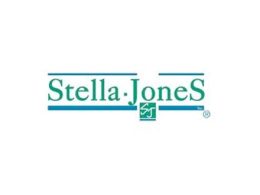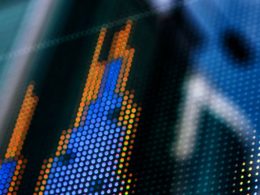by William Smead, Smead Capital Management
On a recent trip to visit clients in Denmark, I had some free time and visited the Viking Wooden Ship Museum in Roskilde. The museum houses cargo and military ships made from oak trees, crafted with materials all formed by hand. They took years to build and helped make Denmark one of the world’s most important trading crossroads. Assumedly, the patience required to practice commerce in the 13th century generated massive cash flow for merchants at that time.
We seek companies which generate high and consistent free cash flow. Much like commerce in the 13th century, patience is required to allow free cash flow to grow your capital over decades. For newbies to us, this is the cash flow of the company minus any and all obligations for the cash which are met during the year. For most companies, the big eater of cash flow is capital spending. Hence, we generally like companies which require less capital spending and have less cyclicality in their business.
Why is free cash flow so important in common stock selection? First, you must think like the owner of an entire business. As a sole owner, the cash flow leftover after all obligations are paid is all yours. The more of it you get, the richer you are! Most investors are too impatient to make wooden ships by hand or wait for this free cash flow to help you get rich slowly in the stock market.
Second, the management of the business can choose to do many things with the leftover cash. They can raise the cash dividend payout or buy back shares in the open market. They could use it to buy other companies and/or expand the business. Or they can let it stack up on their balance sheet as a treasure trove for a rainy day. Regardless of their choice, it is usually causing wealth to build in the company shares.
Two of our other eight criteria speak to the confidence we should have with management’s use of free cash flow. Does the company have a long history of shareholder friendliness the way the Danish people had a long history of building superior wooden boats? Does the company have strong insider ownership, preferably with recent insider or smart money purchases? If the answer is yes, we usually will be comfortable with the management’s choice of what to do with the wonderful cash hoard leftover each year.
Third, some of management’s choices with free cash flow are felt immediately, like distributing dividends or buying back stock. However, some of the choices require patience. Target (TGT) has spent the recent years in a redesign of their stores which sent the capital spending budget soaring. They could do this because they had huge free cash flow. In mid-year 2019, this use of free cash flow is paying off as today’s busy shoppers are responding well to the store designs. Investors needed great patience the last two years as they dedicated free cash flow to the redesign in this cutthroat retail landscape.
We’d like to highlight a few companies we own with high free cash flow, management with a record we trust to use it wisely, and strong insider ownership. Discovery Inc. (DISCA) is a low-cost producer of TV entertainment and produces the most popular networks and shows on cable and streaming. The shares trade for around nine-times free cash flow and a key officer made a significant insider buy in the last couple of weeks.
Bank of America (BAC) is getting a clean bill of health from the Federal Reserve Board on the stress tests and will find out what part of their free cash flow can be used on stock buybacks and dividends. Since they actually have way more capital than they need to grow the bank, they could probably return their entire annual net profit to shareholders!
Amgen (AMGN) is a free-cash-flow juggernaut with a shareholder-friendly management team who oversees a brilliant group of scientists making great biological medicine. They not only gush huge cash flow, but their accounting actually hides their enormous profitability compared to other industries. Research and development (“R&D”) is nearly 17% of gross sales. Much like Target and the store redesign, this R&D spending is the life blood of the company’s future. However, it gets expensed up front rather than depreciated the way long-term investments are accounted for in other businesses. What this means is Amgen has great free cash flow even while a massive investment is being made in future cash flows.
These are three specific examples of companies which generate massive free cash flow and require us to be very patient as we receive the rewards over long time periods. Our other companies have a similar story on free cash flow, shareholder friendliness and strong insider ownership. We think of them as wooden ships like the ones used by the Vikings that dominated the Northern Seas for many, many decades.
Warm regards,
William Smead
The information contained in this missive represents Smead Capital Management’s opinions, and should not be construed as personalized or individualized investment advice and are subject to change. Past performance is no guarantee of future results. Bill Smead, CIO and CEO, wrote this article. It should not be assumed that investing in any securities mentioned above will or will not be profitable. Portfolio composition is subject to change at any time and references to specific securities, industries and sectors in this letter are not recommendations to purchase or sell any particular security. Current and future portfolio holdings are subject to risk. In preparing this document, SCM has relied upon and assumed, without independent verification, the accuracy and completeness of all information available from public sources. A list of all recommendations made by Smead Capital Management within the past twelve-month period is available upon request.
©2019 Smead Capital Management, Inc. All rights reserved.
This Missive and others are available at www.smeadcap.com.














